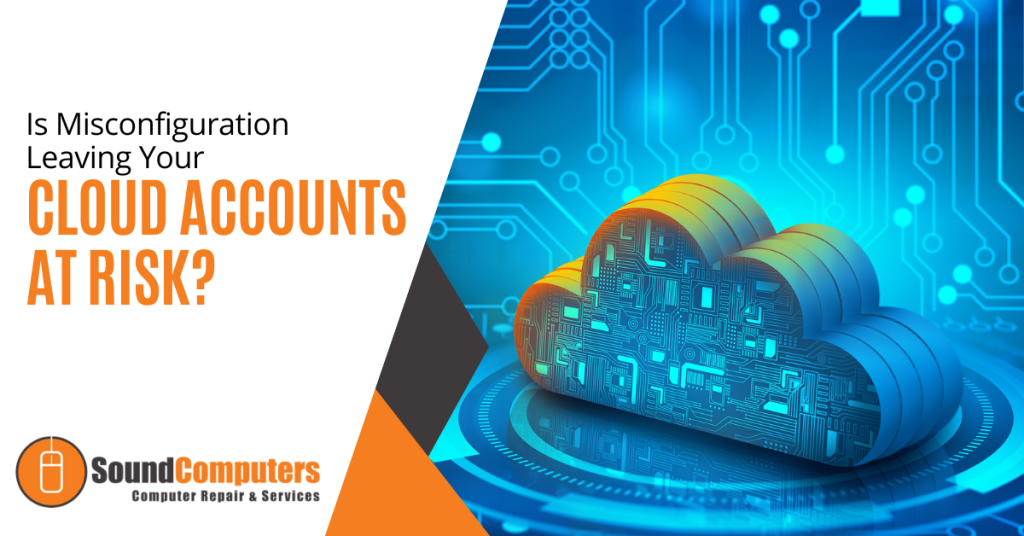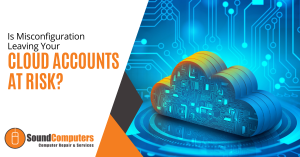
Cloud misconfiguration has become one of the most significant threats to cloud security. Cloud vulnerabilities have increased by 28% since last year. There was an increase in the offer of cloud accounts on the dark web of 200%. The catastrophic impact of cloud misconfiguration has made it clear that proper cloud security and configuration is of the utmost importance.
Cloud breaches constantly make news headlines and the ambiguity that surrounds cloud misconfiguration can seem daunting. Many businesses have lost sensitive data and have been open to cyber-attacks and malware due to cloud misconfiguration.
According to the Business wire, cloud misconfiguration issues are responsible for 80% of data breaches.
With businesses relying on the cloud to store and secure their data, hackers have found much of their success in targeting companies due to misconfigured clouds. The question arises: Is misconfiguration leaving your cloud accounts at risk and its resources being advertised to malicious hackers?
What is cloud misconfiguration?
Cloud misconfiguration is errors, gaps or glitches in the cloud environment that could expose your business to risk. These risks come in the form of insider threats and attacks, cloud breaches, data breaches, malware, security breaches, ransomware or external hackers that could leverage the vulnerabilities available in your cloud environment to gain access to your network.
According to the National Security Agency (NSA), cloud misconfiguration is among the top vulnerabilities in the cloud environment. Cloud misconfiguration is quite complicated and can be very challenging to detect and manually remediate.
How Cloud Misconfigurations Occur
Cloud misconfigurations happen in various ways and for various reasons. Many cloud misconfigurations occur due to human errors and factors such as not enough understanding of the security practices and complex infrastructure.
- Human Error
According to Gartner, until 2025, 99% of cloud issues will be due to human error. Due to the complexity of the cloud infrastructure, employees or customers frequently grant many unrestricted accesses and fill in personal information on any website they open. When many businesses attempt to use tools from cloud vendors to manage identity and access, there may still be gaps.
- Not Enough Understanding of the Security Practices
When creating and managing apps and infrastructure, the majority of developers and DevOps teams do not place a high priority on security. These teams primarily concentrate on ensuring that the cloud environment and services work properly and offer effective functionality to users.
- Complex Infrastructure
When the cloud environment becomes complex, mistakes are bound to happen that open up a way for cyber-attacks to occur. These errors can occur due to adding or creating new containers, creating resources and altering the configurations.
Without some kind of uniformity within your cloud environment, it can be challenging to navigate and use.
What Can Happen When Cloud Misconfiguration Occurs?
Here are some things that happen when cloud misconfiguration occurs:
- Causes Data Breaches
Many businesses are unaware of the number of users in their cloud environment with excessive access to permissions. As a result of this, they are unable to know if there is a problem until after an attack. This can result in severe data loss.
- Opens a Channel for Cyber Criminals to Exploit
Once cloud misconfigurations occur, your environment is open to various vulnerabilities which opens a channel for cyber criminals to exploit and makes it easy for them to access cloud-stored data, steal it, ransom it, install malware and sometimes sell it on the dark web.
- Install Digital Skimming Code
Digital skimming attacks include inserting malicious code into a website’s scripts which are loaded when a user attempts to access the site in their browser. This code intercepts sensitive information entered by the users such as account numbers, social security numbers, credit card details, etc. This information is then sent to a server controlled by the hacker. This information is then gathered, sold and otherwise illegally exploited.
- Exposing Sensitive Data
Cloud misconfigurations can lead to the exposure of confidential and sensitive data or put important files at risk of theft. Cloud misconfiguration gives hackers access to your database or cloud storage, puts your business at risk of corporate espionage and exposure of user data and makes it possible for them to erase crucial data.
- Services Disruption
Once hackers gain access to your servers or network, they have the ability to disrupt your service. This disruption can include malware, insider or ransomware attacks.
How to Protect your Cloud and Prevent Cloud Misconfiguration
The good news is that if misconfiguration is leaving your cloud accounts at risk, you can implement several best practices to protect your cloud-based assets better and prevent a misconfiguration attack.
- Implement Log-Tracking Practices
Enabling logging to control the number of users making changes in your cloud environment can protect your cloud. By tracking changes made, you will be able to identify the root cause of any misconfiguration incidents.
- Enable Encryption
Enabling encryption using cloud computing services keeps your data safe from unauthorized viewing.
- Check Permissions
Reduce permissions to only people who need access to carry out their jobs. Widespread access weakens your business security.
- Perform Regular Misconfiguration Audits
Performing regular audits ensures your cloud environment is always secure. This helps to look for signs of misconfigurations and other cloud threats.
- Practice Strong Security Policies
Set up strong security policies for all cloud infrastructure processes. Also, your employees should be informed about the policies so they don’t misconfigure the cloud setting without knowing.
- Standardize Your Environments
Instead of having a complex cloud infrastructure for every deployed component, standardize some components and deploy them using templates. Once they are standardized, team members can quickly see various component configurations and boost environment management.
- Document Everything
Ensure your environment configurations and documentation are documented and backed up. This lets you compare the new environment with the intended one and also play an essential role in helping your business track what goes wrong, troubleshoot and figure out what to do.
Secure Your Cloud Environment from Misconfigurations
Sound Computers can help your Connecticut business stay protected from cloud misconfigurations while boosting your business productivity.
Contact us today to schedule a free consultation. Call 860-577-8060 or reach us online.

